For nearly a week now, after dinner, Mrs. Thai Thi Hai and her husband (Cu Dlie M'nong commune, Cu M'gar district) have been busy preparing their tools to pollinate durian trees in a field more than 3 km from their home. The tools they bring include a headlamp and a soft-bristled broom attached to a long wooden pole.
In the quiet night, occasionally hearing the sound of frogs and crickets, Mrs. Hai checked the firmness of the broom head, put on a flashlight and started working. Under the flickering flashlight, she approached each durian tree with blooming flowers, gently used the soft broom head to sweep and roll around the flower clusters, moving the pollen from these flower clusters to fall on the stigma of other flower clusters. Just like that, from low branches to high branches, from one tree to another, it took her and her husband about 2 hours to sweep their entire garden.
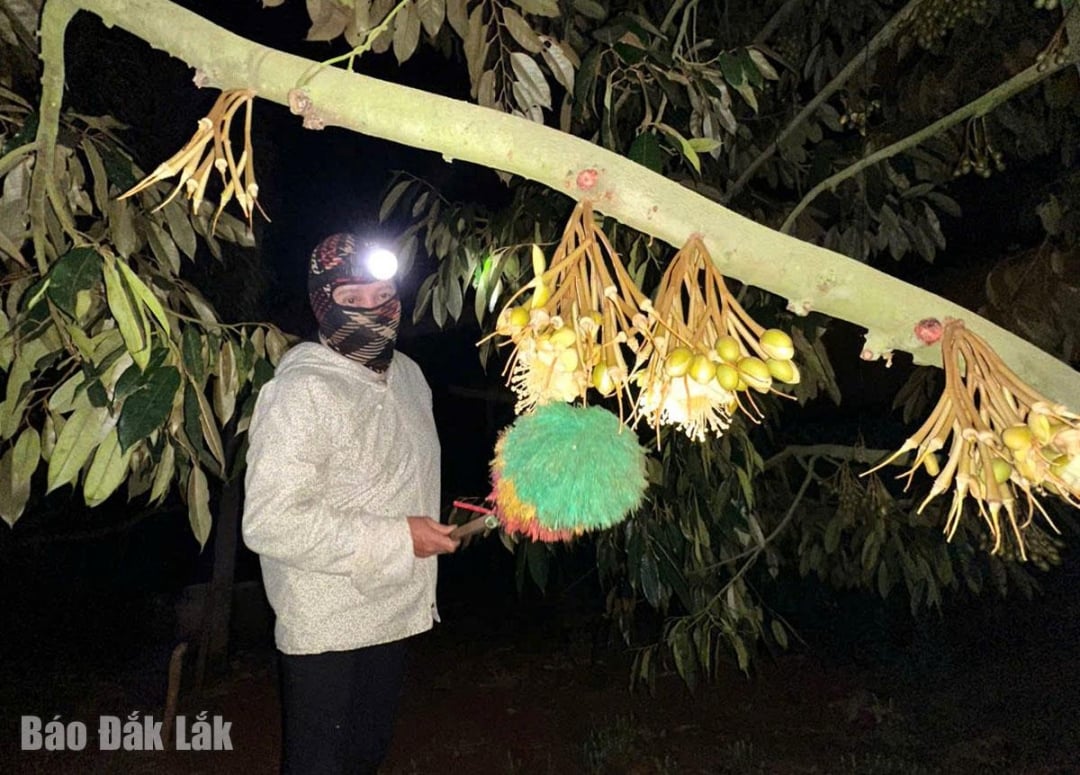 |
| Ms. Thai Thi Hai uses a lamp to pollinate durian. |
Ms. Hai shared that on 1.5 hectares of land, her family planted nearly 150 durian trees in the coffee garden, and the durian has now been harvested for the second year. The care process, the process of making flowers, pollinating, and nurturing the fruit is a very important step. Using a broom to sweep the pollen helps increase the ability of the tree to set fruit, helping the fruit to be round and full. On the same tree, durian flowers do not bloom simultaneously, but some clusters bloom first, some later, so when the flowers in the garden start to bloom, they must take the time to pollinate, the pollination period takes place continuously for about 7-10 days. Learning from the experience of the previous season when pollination was too strong, causing the yield and quality of the fruit to not be as expected, this year, she did it very gently and meticulously.
Like many gardeners in the region, every time the durian flowers bloom, Mr. Nong Van Mong (Ea Tan commune, Krong Nang district) diligently shines a lamp to pollinate the durian. Currently, his family has 100 durian trees, of which only about 50 trees are ready for harvest. Mr. Mong said that for some durian varieties, especially trees that have just produced fruit in the first crop, the fruit set rate by natural pollination is often low, so people need to support pollination for the trees. Depending on the characteristics of each growing area, pollinate durian from March to April. Pollination is done at night, between 6 - 10 pm. Although this work is not difficult, it requires skill, meticulousness, perseverance, and especially gentleness to avoid damaging or breaking the pistil or damaging the flowers. For tall durian trees with long branches and insufficient pole length, farmers even have to climb the tree and observe carefully to be able to pollinate all the flower clusters. If pollination techniques are performed correctly, durian will have a high fruit set rate and the tree will produce round, even fruit.
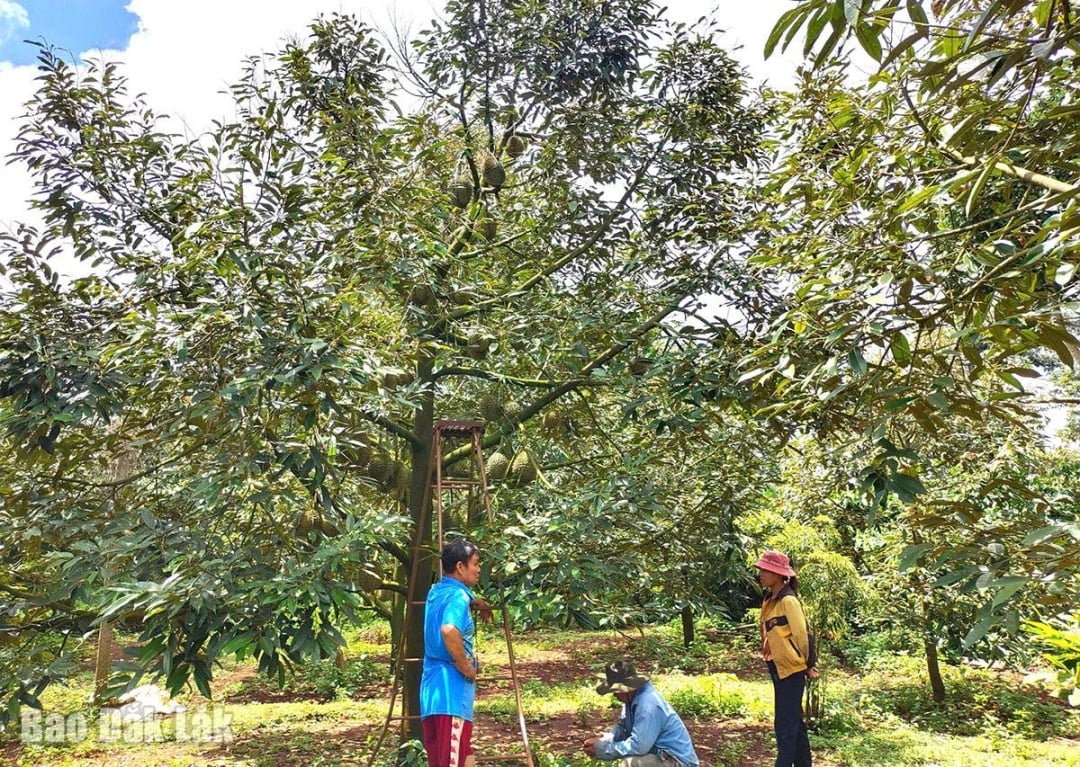 |
| Farmers conduct additional pollination for durian in the hope that the tree will bear high fruit and round fruit. |
According to Mr. Mong, from growing for "fun" eating, in recent years, when the price of this fruit is high, farmers have also focused on investing and applying science and technology to care for the trees to achieve high productivity. In particular, growing durian requires the garden owner to be experienced and take care of the garden like taking care of a baby. Along with flowering and pollination, it is necessary to provide enough water, fertilize, prevent pests and diseases... with the right techniques for the durian tree to grow well and produce quality fruit.
In the dark night, the durian gardens are in the stage of blooming flowers, giving off a fragrant scent. Durian flowers grow in clusters, spread out on the branches, ivory white or blue-white, tiny pistils reaching out between the fragile petals. Each cluster of durian flowers has from a few flowers to a few dozen flowers, growing towards the ground. Although there are many flowers, to ensure nutrition, productivity, and quality, after the pollination and fruit formation stages, the gardeners will continue to prune the fruit, selecting the most beautiful and best durian fruits to wait for harvest day.
Source: https://baodaklak.vn/kinh-te/202504/soi-den-se-duyen-cho-sau-rieng-6751941/







![[Photo] Prime Minister Pham Minh Chinh chairs conference on anti-smuggling, trade fraud, and counterfeit goods](https://vphoto.vietnam.vn/thumb/1200x675/vietnam/resource/IMAGE/2025/5/14/6cd67667e99e4248b7d4f587fd21e37c)















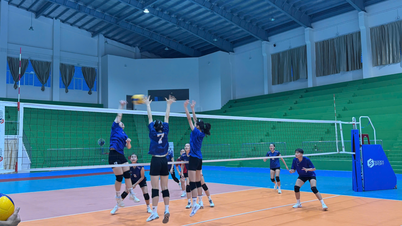



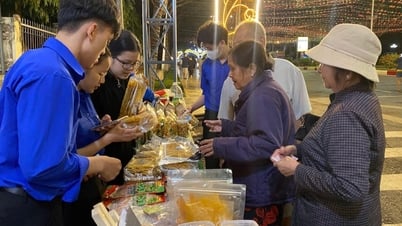

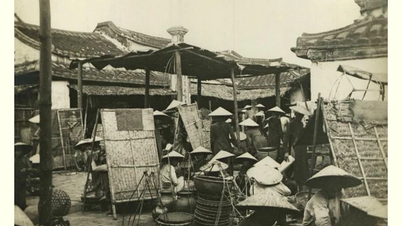




























































Comment (0)